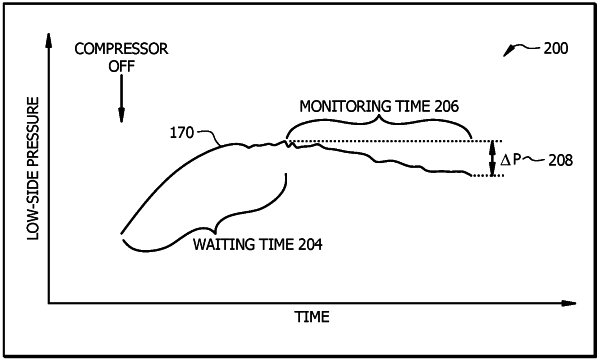| CPC F24F 11/36 (2018.01) [F24F 11/84 (2018.01); F24F 11/86 (2018.01); F24F 2140/12 (2018.01); F24F 2140/20 (2018.01)] | 20 Claims |

|
1. A heating, ventilation, and air conditioning (HVAC) system, the HVAC system comprising:
a high-pressure subsystem comprising:
a condenser operable to receive refrigerant and transfer heat from the refrigerant to a flow of outdoor air, thereby generating a cooled refrigerant; and
a controllable valve positioned in a refrigerant conduit connecting the condenser to an evaporator; and
a low-pressure subsystem comprising:
the evaporator operable to receive the cooled refrigerant and transfer heat from a flow of air to the cooled refrigerant;
a compressor operable to compress the refrigerant; and
a pressure sensor operable to measure a refrigerant pressure in the low-pressure subsystem; and
a controller communicatively coupled to the pressure sensor, and the controllable valve, wherein the controller comprises a processor configured to:
close the controllable valve;
cause the compressor to operate until a particular refrigerant pressure is reached;
after the particular refrigerant pressure is reached, stop operation of the compressor;
after stopping operation of the compressor and waiting at least a particular wait time, monitor the refrigerant pressure in the low-pressure subsystem of the HVAC system for a period of time;
determine a rate of change of the refrigerant pressure in the low-pressure subsystem for the period of time;
if the rate of change is negative and a magnitude of the rate of change is greater than a threshold value, determine that a leak location of the refrigerant is in the low-pressure subsystem of the HVAC system; and
if one or both of the rate of change is not negative and the magnitude of the rate of change is not greater than a threshold value, determine that the leak location of the refrigerant is in the high-pressure subsystem of the HVAC system.
|